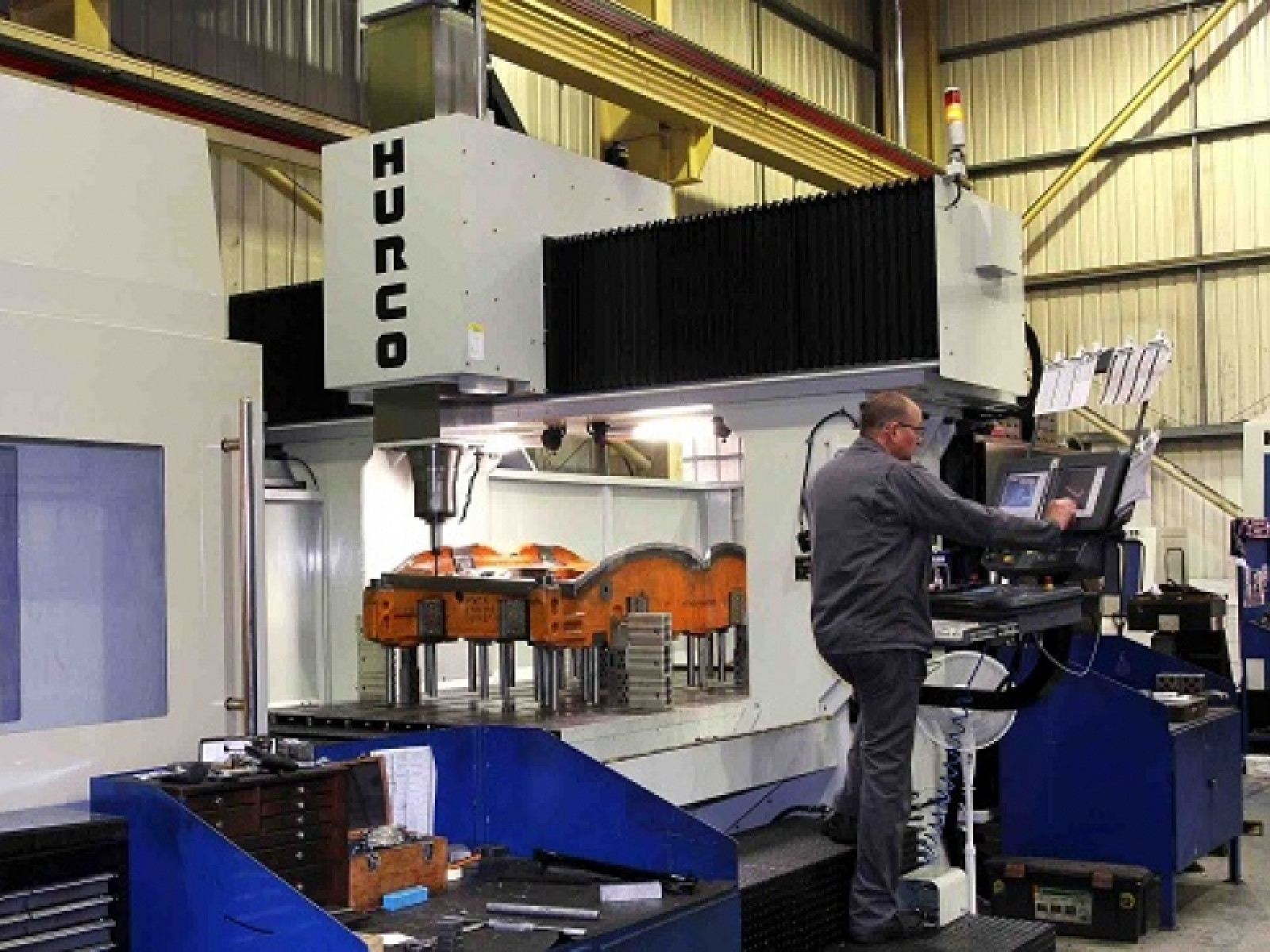Black Country toolmaker and subcontractor, Cube Precision Engineering, has installed its largest Hurco machining centre to date, a 3,200 x 2,100 x 920 mm capacity, bridge-type, vertical-spindle DCX32. Delivered at the end of May 2012, it is the fifth machining centre from the same supplier to be purchased.
The latest investment follows recent strong business growth, particularly in the manufacture of automotive press tools for producing interior and body components for such famous marques as Land Rover, Jaguar, BMW and Honda. Turnover at the 35-employee firm is expected to increase this year by more than 12 per cent compared with 2011 to £3.5 million.
One recent high-profile job was completing work on tools for pressing the door outer panels that go into the new, all-aluminium Range Rover (L405), launched at the Paris Motor Show on 27th September 2012. Other press tools machined on the 3-axis DCX include those for
producing the wheel arches for the Jaguar F-Type (X152), a new, aluminium-chassis, two-seater sports car due to enter production in 2013.
Mould tools, progression dies and transfer tooling are also produced on a total of 11 CNC machines running 24 hours a day, 5 days a week at Cube's Rowley Regis factory. The larger machines are fitted with multi-axis heads to enable 3+2 axis CNC machining of complex components.
Outside the automotive industry, the Hurco DCX regularly produces aerospace components, including for jet engine research, and machines parts for armoured personnel carriers and tanks. Materials processed range from aluminium through cast iron, Armox, aerospace grade steels and Inconel to D2 and P20 tool steels. Almost all work is for primes and tier 1 manufacturing companies.
Cube's service encompasses proving the tooling it produces on presses ranging up to 4.5 metres / 1,000 tons-force. For the aerospace sector, the company designs and manufactures tooling used in die quench and super plastic forming processes as well as a range of composite materials.
Neil Clifton, one of three director-owners of Cube, commented, "We are one of very few companies in the UK that has invested in the space, craneage and equipment to machine parts to five metres in X and weighing up to 35 tonnes.
"Finish machining of large-size parts was causing a bottleneck, so we opted for a Hurco DCX32, as it was economically priced for a machine with over six cubic metres of working volume.
"Despite its size, the machine easily achieves general tolerances of 0.03 mm and regularly goes down to 0.02 mm, with excellent surface finish.
"We also liked the fact that the machine comes with a 40-position magazine and automatic toolchanger for BT50 cutters as standard. Such equipment normally costs extra on a machining centre of that size."
Another benefit of the machine to Cube is that its operators, already familiar with using the twin-screen WinMax / Ultimax control on the other four Hurcos on site, could move seamlessly onto the identical CNC system controlling the DCX32. WinMax has powerful, conversational shop floor programming capability and a second screen on which a graphic of the part is generated as the cycles are built up.
Mr Clifton says that, in practice, most 3D cycles are prepared off-line from customers' models, imported into Delcam Powershape, via IGES if necessary, and processed using Powermill CAM software.
Changes to a job can require urgent attention, such as alterations to a tool when automotive body parts are not fitting together properly during
a vehicle's initial build phase. So prompt programming offline from a revised solid model is essential while the tool is being transported back to Cube.
It is usual for simpler 2D elements of a program to be programmed at the control by the machine operator, however. One of the benefits of WinMax is that such cycles can be easily merged with the 3D cutter paths prepared externally. Previously, such an approach would have resulted in two separate cutting cycles.











